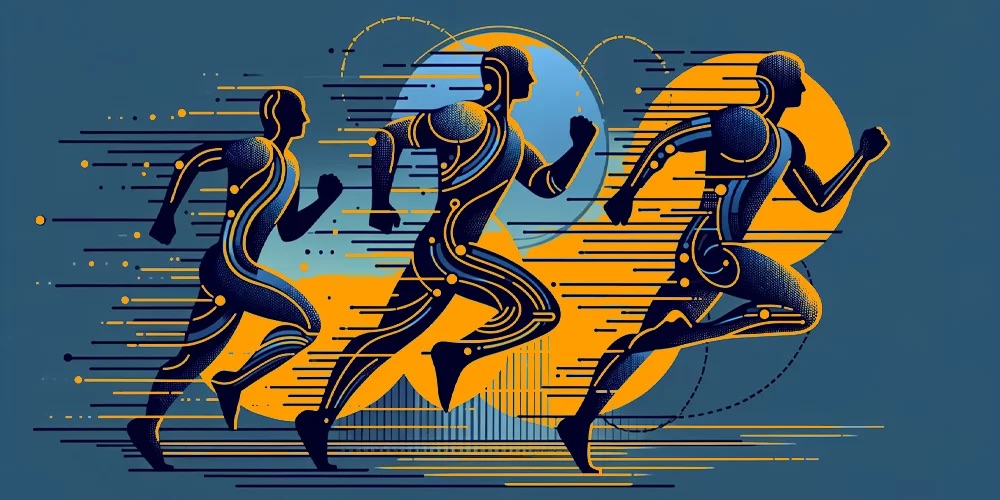Running is more than just putting one foot in front of the other. Indeed, speed and endurance strongly depend on the quality of our movements – the running technique. But what exactly do we mean by running technique, and why is it so crucial for runners of all experience levels? How can refining running technique not only enhance our performance but also minimize the risk of injury? And how can you effectively improve your technique to reach a new level of efficiency and enjoyment in running? You’ll find the answers in this text.
The Key to Efficient and Injury-Free Running
The term “running technique” encompasses all biomechanical movement patterns during running. It’s not just about simple forward motion but about executing each phase of the stride efficiently and healthily. From the way the foot strikes (heel strike, midfoot strike, or forefoot strike), to knee stability, hip alignment, body posture, and arm movement – all these elements play a crucial role in running technique.
A central aspect of evaluating running technique is the efficiency of movements. Optimal technique enables the most effective use of available energy for propulsion, minimizing energy loss through lateral movements and ensuring direct, forward-oriented force transmission. This also includes reducing braking forces that act with each step when the foot lands in front of the body’s center of gravity.
In addition to efficiency, injury prevention plays a vital role in running technique. Proper execution of the running movement protects joints, tendons, and muscles, significantly reducing the risk of overuse injuries and other running-related injuries. Here, correct body posture, balanced musculature, and flexibility are particularly important.
How to Improve Running Technique?
Improving running technique is a process that requires both understanding and patience. To develop an awareness of your own running technique, video analysis, treadmill tests under professional guidance, or feedback from a running coach can be helpful. These methods assist in identifying individual weaknesses and improvement potential.
RUNNING DRILLS
For targeted work on running technique, running drills, consisting of exercises like high knees, heel walks, and skipping, are a proven method. These exercises, performed before endurance runs for about 10 to 15 minutes, promote coordination and flexibility and strengthen the muscle groups relevant for running.
STRENGTH TRAINING
Strength and stability training, especially for the core muscles and the muscles of the lower extremities, promotes improved running technique. Exercises like planks, bridges, or squats, integrated two to three times a week, contribute to strengthening body posture and supporting powerful running movement.
Through regular feedback, evaluating progress and challenges, training can be adjusted as needed, making the process of optimizing running technique a lasting development path.
By the way: Technique drills are regularly suggested to you by running.COACH in both the app and web version through videos. You will find these on the detail page of your workouts.
Who Should Work on Their Running Technique?
The short answer is: every runner. Regardless of experience level or personal goals, improving running technique can benefit anyone who loves to run. Beginners can develop efficient and healthy running habits from the start, while experienced runners can optimize their performance and minimize the risk of injury.
Conclusion
Running technique is a significant factor for success and enjoyment in running. Through targeted training and conscious application, every runner can improve their technique and become a more efficient, faster, and happier athlete. It’s worth investing time and energy in improving running technique – your body and running performance will thank you.
Create a personalized and dynamic training plan with running.COACH to prepare you for your running goals, based on your current fitness level. Try running.COACH free for two weeks after your first sign-up!



